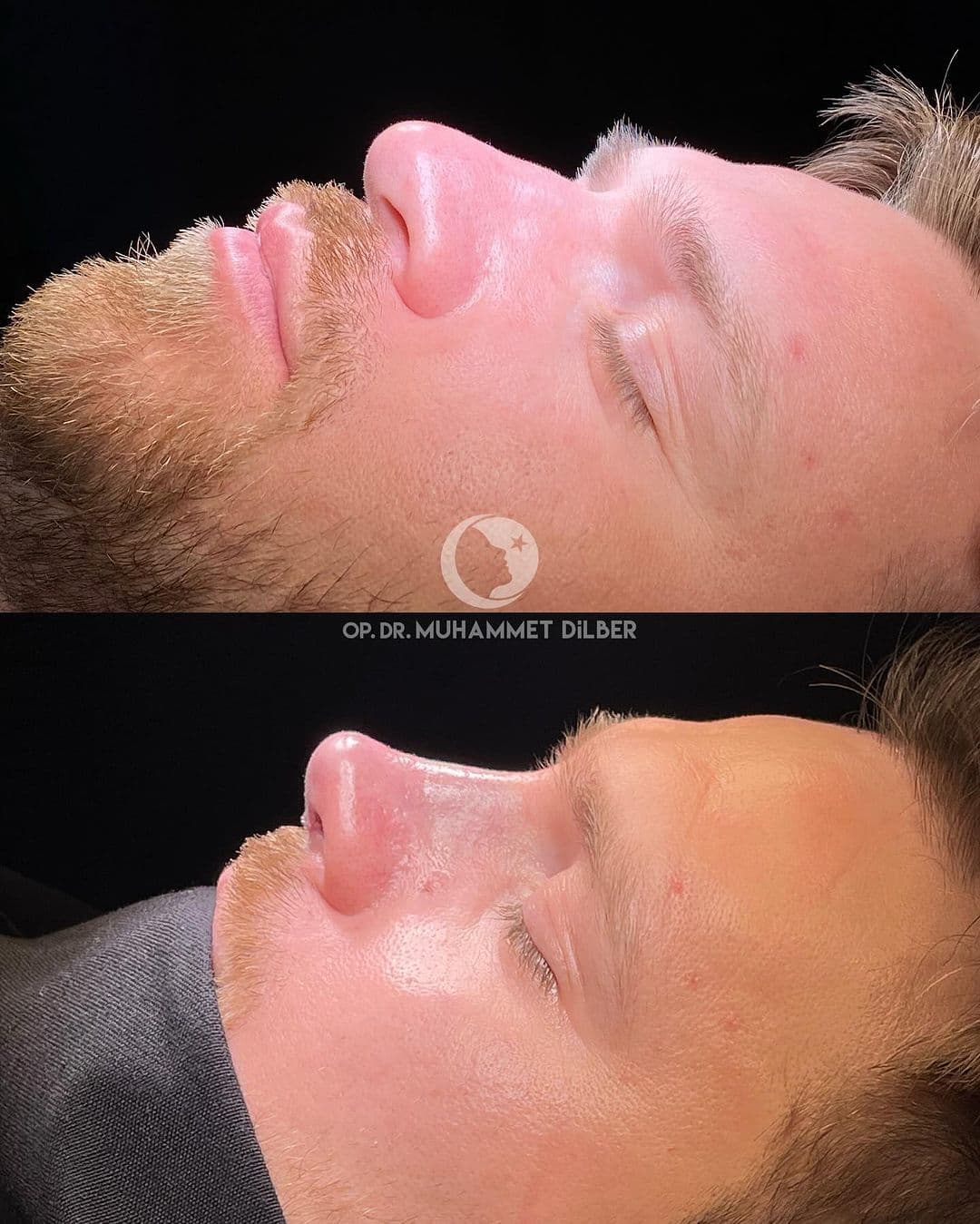
Rhinoplasty

Septorhinoplasty
07/12/2023
A Comprehensive Guide to Nasal Health and Aesthetics
Septorhinoplasty, a combination of septoplasty and rhinoplasty, is a surgical procedure designed to address both functional and aesthetic concerns of the nose. In this comprehensive guide, we will explore the intricacies of septorhinoplasty, shedding light on its definition, the conditions it addresses, and why it is a transformative solution for individuals seeking both improved nasal function and enhanced aesthetics.
1. Septorhinoplasty Unveiled: Harmonizing Form and Function
Septorhinoplasty is a surgical procedure that combines septoplasty and rhinoplasty. Septoplasty focuses on correcting a deviated septum, which can impede airflow and cause breathing difficulties, while rhinoplasty addresses the aesthetic aspects of the nose. This dual-purpose surgery is ideal for individuals looking to improve both the function and appearance of their nasal structure.
2. Functional Benefits of Septorhinoplasty: A Breath of Fresh Air
● Septoplasty for Deviated Septum: The septum is the cartilage that divides the nasal cavity. A deviated septum can lead to airflow obstruction, causing issues such as snoring, difficulty breathing, and recurrent sinus infections. Septorhinoplasty corrects the deviation, restoring proper airflow and improving breathing function.
● Enhanced Nasal Function: Beyond correcting septal deviations, septorhinoplasty can address other structural issues contributing to nasal obstruction. This can include adjusting the size of the turbinates or repairing nasal valve collapse, resulting in improved overall nasal function.
3. Aesthetic Transformations: Rhinoplasty in Septorhinoplasty
● Refining the Nose's Appearance: In addition to addressing functional concerns, septorhinoplasty allows for aesthetic enhancements. Surgeons can reshape the nose, refine the tip, narrow the bridge, or correct asymmetries, providing patients with the opportunity to achieve a more balanced and aesthetically pleasing facial profile.
1. Septorhinoplasty Unveiled: Harmonizing Form and Function
Septorhinoplasty is a surgical procedure that combines septoplasty and rhinoplasty. Septoplasty focuses on correcting a deviated septum, which can impede airflow and cause breathing difficulties, while rhinoplasty addresses the aesthetic aspects of the nose. This dual-purpose surgery is ideal for individuals looking to improve both the function and appearance of their nasal structure.
2. Functional Benefits of Septorhinoplasty: A Breath of Fresh Air
● Septoplasty for Deviated Septum: The septum is the cartilage that divides the nasal cavity. A deviated septum can lead to airflow obstruction, causing issues such as snoring, difficulty breathing, and recurrent sinus infections. Septorhinoplasty corrects the deviation, restoring proper airflow and improving breathing function.
● Enhanced Nasal Function: Beyond correcting septal deviations, septorhinoplasty can address other structural issues contributing to nasal obstruction. This can include adjusting the size of the turbinates or repairing nasal valve collapse, resulting in improved overall nasal function.
3. Aesthetic Transformations: Rhinoplasty in Septorhinoplasty
● Refining the Nose's Appearance: In addition to addressing functional concerns, septorhinoplasty allows for aesthetic enhancements. Surgeons can reshape the nose, refine the tip, narrow the bridge, or correct asymmetries, providing patients with the opportunity to achieve a more balanced and aesthetically pleasing facial profile.

4. Candidates for Septorhinoplasty: Who Benefits Most?
● Breathing Difficulties: Individuals experiencing chronic nasal congestion, difficulty breathing, or snoring due to a deviated septum are prime candidates for septorhinoplasty.
● Aesthetic Concerns: Those seeking both functional improvements and aesthetic enhancements to their nasal appearance can also benefit from septorhinoplasty.
5. The Procedure in Detail: What to Expect
Septorhinoplasty is typically performed under general anesthesia. The surgeon begins by addressing the functional aspects, correcting the deviated septum and addressing other structural issues. The rhinoplasty component follows, allowing for aesthetic adjustments. Recovery time varies, with patients experiencing improved breathing and gradually seeing the final aesthetic results as swelling subsides.
Who Should Consider Septorhinoplasty?
1. Chronic Nasal Congestion and Breathing Difficulties:
If you find yourself constantly battling nasal congestion, difficulty breathing, or snoring, you might be an ideal candidate for septorhinoplasty. The procedure addresses a deviated septum, corrects structural issues impeding airflow, and enhances overall nasal function. Individuals experiencing persistent breathing challenges can significantly benefit from the functional improvements offered by septorhinoplasty.
2. Deviated Septum Sufferers:
Septorhinoplasty is particularly suitable for individuals with a deviated septum. A deviated septum can lead to a variety of issues, including obstructed breathing, increased susceptibility to sinus infections, and snoring. If you've been diagnosed with a deviated septum, septorhinoplasty can correct this structural problem, restoring proper airflow and alleviating associated symptoms.
3. Aesthetic Concerns and Nasal Harmony Seekers:
Beyond functional improvements, septorhinoplasty is an excellent choice for individuals seeking aesthetic enhancements to their nasal appearance. If you're unhappy with the shape of your nose, have asymmetries, or desire a more balanced facial profile, septorhinoplasty allows for tailored aesthetic adjustments while addressing functional concerns.
4. Previous Nasal Trauma or Injury:
Individuals who have experienced nasal trauma or injury may benefit from septorhinoplasty. Trauma can result in structural abnormalities that affect both the function and appearance of the nose. Septorhinoplasty can correct these issues, restoring the nose to its optimal state and improving both breathing and aesthetics.
5. Realistic Expectations and Good Overall Health:
Candidates for septorhinoplasty should have realistic expectations about the outcomes of the procedure. It's essential to understand that while septorhinoplasty can provide significant improvements, perfection is not always achievable. Additionally, candidates should be in good overall health, as this contributes to a smoother and safer surgical experience.
6. Consultation with a Qualified Surgeon:
Ultimately, the best way to determine if septorhinoplasty is right for you is through a consultation with a qualified and experienced plastic surgeon. During the consultation, the surgeon will assess your nasal anatomy, discuss your concerns and goals, and provide personalized recommendations based on your unique circumstances.
Septorhinoplasty is a transformative procedure that caters to individuals with a range of nasal concerns, from functional issues to aesthetic desires. If you identify with any of the characteristics mentioned above and are considering septorhinoplasty, consult with a skilled surgeon to explore how this procedure can address your specific needs, contributing to both improved nasal function and enhanced aesthetic harmony.
● Breathing Difficulties: Individuals experiencing chronic nasal congestion, difficulty breathing, or snoring due to a deviated septum are prime candidates for septorhinoplasty.
● Aesthetic Concerns: Those seeking both functional improvements and aesthetic enhancements to their nasal appearance can also benefit from septorhinoplasty.
5. The Procedure in Detail: What to Expect
Septorhinoplasty is typically performed under general anesthesia. The surgeon begins by addressing the functional aspects, correcting the deviated septum and addressing other structural issues. The rhinoplasty component follows, allowing for aesthetic adjustments. Recovery time varies, with patients experiencing improved breathing and gradually seeing the final aesthetic results as swelling subsides.
Who Should Consider Septorhinoplasty?
1. Chronic Nasal Congestion and Breathing Difficulties:
If you find yourself constantly battling nasal congestion, difficulty breathing, or snoring, you might be an ideal candidate for septorhinoplasty. The procedure addresses a deviated septum, corrects structural issues impeding airflow, and enhances overall nasal function. Individuals experiencing persistent breathing challenges can significantly benefit from the functional improvements offered by septorhinoplasty.
2. Deviated Septum Sufferers:
Septorhinoplasty is particularly suitable for individuals with a deviated septum. A deviated septum can lead to a variety of issues, including obstructed breathing, increased susceptibility to sinus infections, and snoring. If you've been diagnosed with a deviated septum, septorhinoplasty can correct this structural problem, restoring proper airflow and alleviating associated symptoms.
3. Aesthetic Concerns and Nasal Harmony Seekers:
Beyond functional improvements, septorhinoplasty is an excellent choice for individuals seeking aesthetic enhancements to their nasal appearance. If you're unhappy with the shape of your nose, have asymmetries, or desire a more balanced facial profile, septorhinoplasty allows for tailored aesthetic adjustments while addressing functional concerns.
4. Previous Nasal Trauma or Injury:
Individuals who have experienced nasal trauma or injury may benefit from septorhinoplasty. Trauma can result in structural abnormalities that affect both the function and appearance of the nose. Septorhinoplasty can correct these issues, restoring the nose to its optimal state and improving both breathing and aesthetics.
5. Realistic Expectations and Good Overall Health:
Candidates for septorhinoplasty should have realistic expectations about the outcomes of the procedure. It's essential to understand that while septorhinoplasty can provide significant improvements, perfection is not always achievable. Additionally, candidates should be in good overall health, as this contributes to a smoother and safer surgical experience.
6. Consultation with a Qualified Surgeon:
Ultimately, the best way to determine if septorhinoplasty is right for you is through a consultation with a qualified and experienced plastic surgeon. During the consultation, the surgeon will assess your nasal anatomy, discuss your concerns and goals, and provide personalized recommendations based on your unique circumstances.
Septorhinoplasty is a transformative procedure that caters to individuals with a range of nasal concerns, from functional issues to aesthetic desires. If you identify with any of the characteristics mentioned above and are considering septorhinoplasty, consult with a skilled surgeon to explore how this procedure can address your specific needs, contributing to both improved nasal function and enhanced aesthetic harmony.
